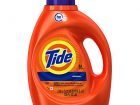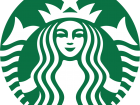
Gadget maker ZAGG ignores best practices and commits a costly faux pas with its Google AdWords Display Network ads.
There’s no question that for many businesses a Google AdWords campaign can be an effective component of a marketing or advertising campaign. With powerful targeting tools, incredible metrics and insight and when finely tuned, Google AdWords can be very cost-effective and provide significant ROI. So when I stumble on an advertiser that ignores some of the basic tenets of online advertising I can’t help but wonder, per chuckle about, what the advertiser is doing.
The Biggest Mistake You Can Make In Your Google AdWords or Google Display Network Campaign
I know that perhaps this isn’t fair, yet I can’t help but bring up a specific example of an advertiser that could be smarter and ultimately increase the effectiveness of its ads and lower its cost per click. So in today’s quick post I target Zagg, an iPad and mobile device accessory and gadget marketer, and how they seem to have ignored best practices when it comes to developing an effective Google AdWords campaign. In short, they committed the most serious Google AdWords faux pas an advertiser can do. I happen to notice this on Appleinsider.com, an Apple news and rumor site, after clicking on its ad.
According to its press release boilerplate: “Zagg is a leader in innovative mobile device accessories that protect, personalize, and enhance the mobile experience. The company designs, produces, and distributes branded screen protection under the invisibleSHIELD® brand, keyboards, keyboard cases, earbuds, mobile power solutions and device cleaning accessories under the family of Zagg® brands.”
Zagg is running ads on the Google Display Network, which allows advertisers to display ads on over a million websites worldwide. These contextual ads appear when content on the website page is relevant to the advertising message or advertiser keywords—or when the site visitor had previously responded to an ad or visited an advertiser website.
What did Zagg do that’s so terrible? I’m not going into a deep analysis of its campaign, the ad, the copy, the colors or anything else. Zagg’s mistake comes down to simple strategy, planning and best practices: Zagg is not using a landing page.
A landing page is simply the page a potential customer “lands on” after clicking a text or graphical link. When it comes to using Google AdWorlds or other PPC (pay-per-click) advertising campaigns, well designed and simple landing pages that contain relevant information and reinforce the ad that was clicked are proven to perform better than linking to a generic website. Plus, Google considers landing page content when determining Ad Quality Score: “Your landing page quality affects not only your Quality Score, but also your advertising costs and ad position.”
This means ads with high ad quality scores actually cost less per click than ads with lower scores and they receive priority placement.
So in the case of Zagg, its ads are not only getting dinged by lower response or conversion rates, but they are likely paying a higher rate per click. This is funny. Because even it is moderately increasing sales and awareness, in reality, the Zagg advertising campaign is costing the company money.
Now maybe ZAGG is betting on the fact that those who click on its ads, will be interested in its vast offering of gadgets and accessories — for the iPad and more. I would question this approach and point to dozens of case studies that show target and content specific landing pages will outperform generic and general sites and lead to lower PPC costs.
 Five Simple Steps To More Effective Google AdWords Campaigns & Lower Cost PPC
Five Simple Steps To More Effective Google AdWords Campaigns & Lower Cost PPC
1) Use landing pages
2) Make sure the content on your landing page is relevant and related to the ad
3) Design your landing page to be easy to navigate and includes a strong call to action
4) Provide easy to find and clear contact information
5) Be consistent: reinforce the ad offer and message by using graphics, color and message points on your landing page
 Just by taking these simple and easy to implement steps, you can reduce Google AdWords and Google Display Network advertising costs while increasing effectiveness and earning a higher ROI.
Just by taking these simple and easy to implement steps, you can reduce Google AdWords and Google Display Network advertising costs while increasing effectiveness and earning a higher ROI.
Want to see Zagg’s faux pas in action? Here’s a 2 minute screencast of a bad contextual display ad and a good display ad with relevant landing page:





Wow. Thought everyone knew this! I think the first mistake Zagg made was not leveraging or using a Google account team or rep.
Good point Keven. It’s so basic and so common. Google even has help files on how to do this. But alas, advertisers and teams never seem to have the time to do things right the first time! Yet, somehow they always will find the time to do something over!
AFK, took my first trip inside the “plex” last week. What a company. Very inspirational! Keep up the good work.
Did you dig on all the restaurants and the options for food? Amazing!!!
Thanks for the note and more updates coming!